Inside the World of Virginia’s Roadside Attraction King
For more than 30 years, Mark Cline has been keeping the state weird.
Imagine winding down the switchbacks of a rural mountain road into the tiny town of Buena Vista, Virginia. You glide down sleepy Main Street, passing renovated Victorian-style homes and small businesses, when suddenly you spot three eight-foot-long ants affixed to the facade of an old three-story brick building. Blinking, you spy giant cartoonish grasshoppers peering down from nearby fire escapes and rooftops. A mosquito clinging to a pharmacy sign. A giant spider perched in a park tree. A praying mantis gazing at the doors of a church.
This is the latest addition to 57-year-old artist Mark Cline’s 30-year tradition of April Fools’ pranks. Each year, Cline crafts a sculpture and arranges it in a public space, typically within 50 miles of his studio in Natural Bridge, Virginia.
In 2017, there was a life-sized house-painter desperately clinging to a balcony at the Robert E. Lee Hotel in Lexington, Virginia. The year before that, a giant octopus devouring a jon boat emerged in nearby Lake Robertson. Back in 2012, a 50-foot-long Russian submarine replete with saluting captain appeared in a public pond. Other years, it was Spiderman swinging from a fire escape. A family of truck-sized dinosaurs waiting to cross a country road. Batman perched on the roof of a local bank.
Most notable was Cline’s 2004 handmade life-size foam replica of Stonehenge. Positioned in a hilltop meadow just off a well-trafficked highway near Lexington, the installation caused enough ruckus to nab a mention on the Today Show, and a feature in the Washington Post.
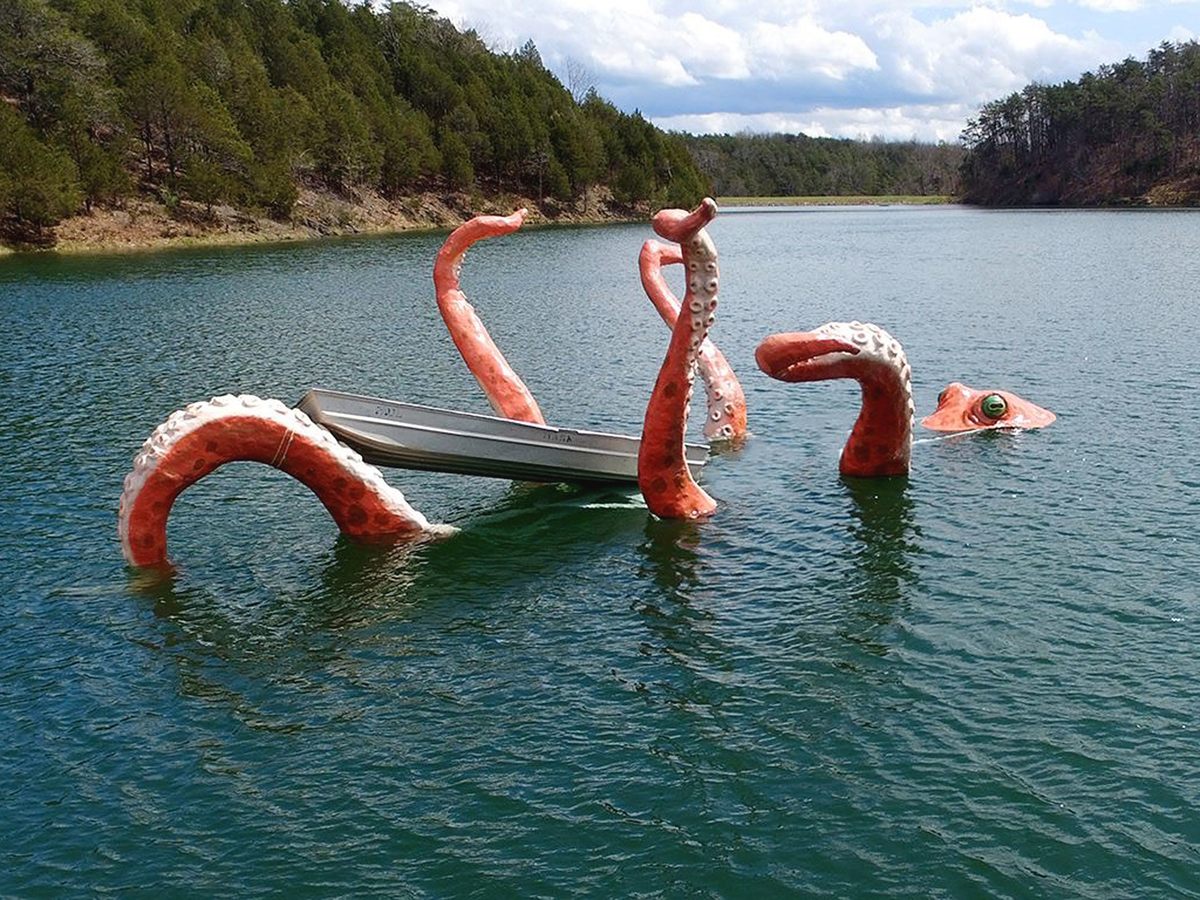
While for most, such acts would entail a major undertaking, these are but small bursts from Cline’s prolific imagination.
Often referred to as the “Poor Man’s Disney,” throughout the 90s and early 2000s, Cline earned a reputation for creating offbeat roadside tourist attractions. In Virginia Beach, there was Professor Cline’s Time Museum. Constructed in 1999, the chain-driven coaster carried visitors through an animatronic dark-ride featuring a Wild West shootout, an escape from ancient Pompeii, and an alien abduction in the Bermuda Triangle. In 2004, there was Captain Cline’s Pirate Adventure Ride, also in Virginia Beach. Traveling through a ghost ship, patrons encountered pirates battling a giant octopus, a monstrous shark, and dinosaurs.
More recently, Cline’s work has found an unexpected home in art museums. In 2012, Virginia’s Taubman Museum of Art asked him to do his first formal show. The result was a 20-piece exhibit entitled, Blue Ridge Barnum. There was a huge sculpture of King Kong on an outside balcony, a 12-foot-tall Frankenstein-headed chicken entitled “Franken Chicken,” and a T-Rex scarfing down a screaming Union soldier. At his “lecture,” Cline raised eyebrows by instructing 400 visitors to inflate and, in unison, sit on whoopie cushions.
The exhibition was extremely popular. “There was a tremendous amount of traffic,” says the Taubman’s current deputy director of communications, Sunny Nelson. “We had people coming in from up and down the East Coast.”
However, there was some controversy. While many defended Cline’s ingenuity, others decried him as a tasteless fashioner of kitsch. The debate was best captured in a Wall Street Journal feature, which asked: But is this really art?
“Luckily, I don’t view myself as an artist so much as an entertainer,” says Cline. “I have this philosophy, like, the world is a serious enough place as it is. My hope is, you see these things and have a chuckle. If I can startle a person into forgetting their woes and feeling good, even if it’s just for a second—that’s my metric for success.”
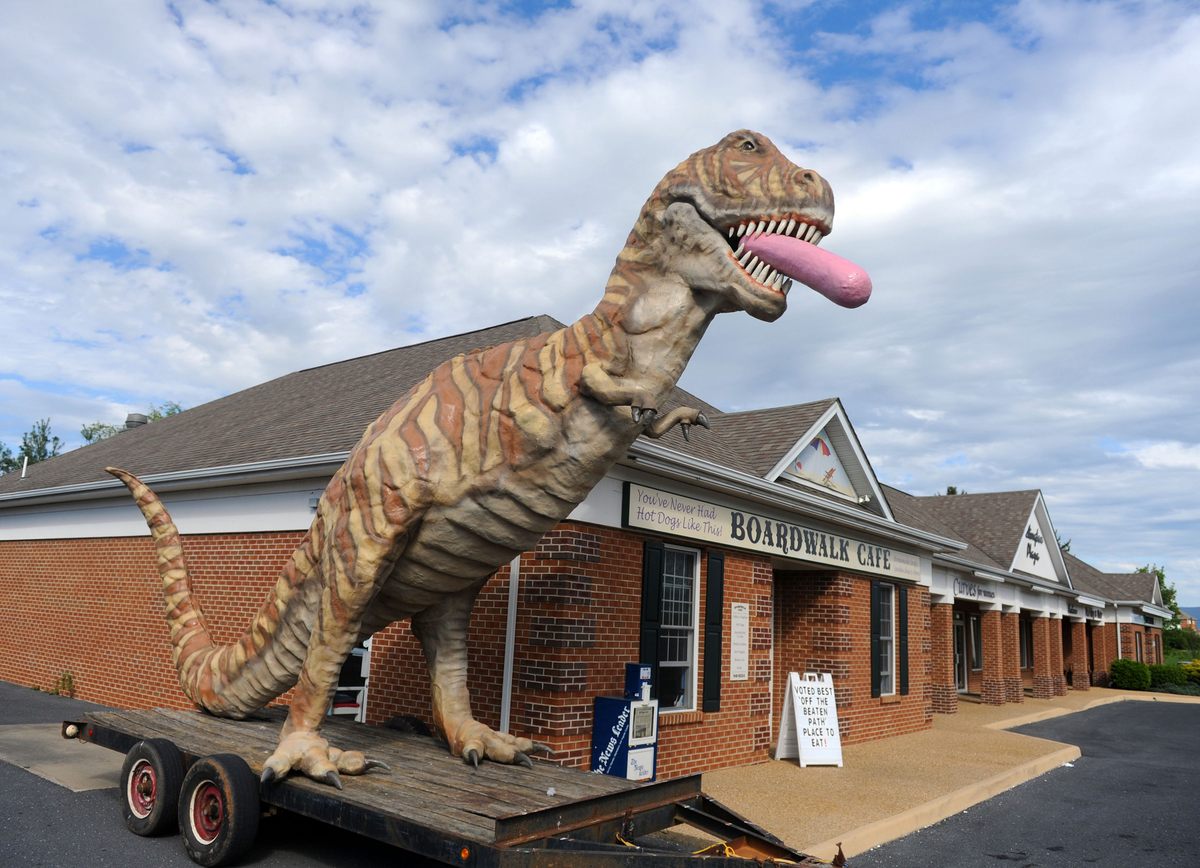
Cline discovered his knack for art and sculpture at an early age. Even then, his aesthetic inclined toward shock-and-awe weirdness.
“I was such a terrible student I’d celebrate a D-minus,” he says. “So, when I realized I had this bizarre knack for drawing and making things, I guess I innately started trying to deflect people’s attention toward that, as opposed to my half-ass academics.”
A native of Waynesboro, Virginia, Cline landed himself in the local paper at the age of eight by sculpting a human-sized snowman rendered to look like the Statue of Liberty. Four years later, he made his second appearance after crafting a billboard-sized comic strip depicting an assortment of movie monsters. By high school, he was making silent-films featuring homemade special effects and costumes. To advertise upcoming screenings, he staged live street-battles between his protagonist and various villains. That too got him in the paper.
After graduating high school, lacking the grades necessary to attend art school, Cline opted to spend a year as a “wandering bum,” he says. Eventually, he came home and got a job in a workshop casting toy figurines from resin. Though the gig didn’t last long, it was there he discovered the possibilities of molding.
“The owner pulled me aside and showed me how to make a mold of my hand,” he explains. “When I saw the finished product, I was like, ‘Holy shit, you can make anything out of this stuff!’”
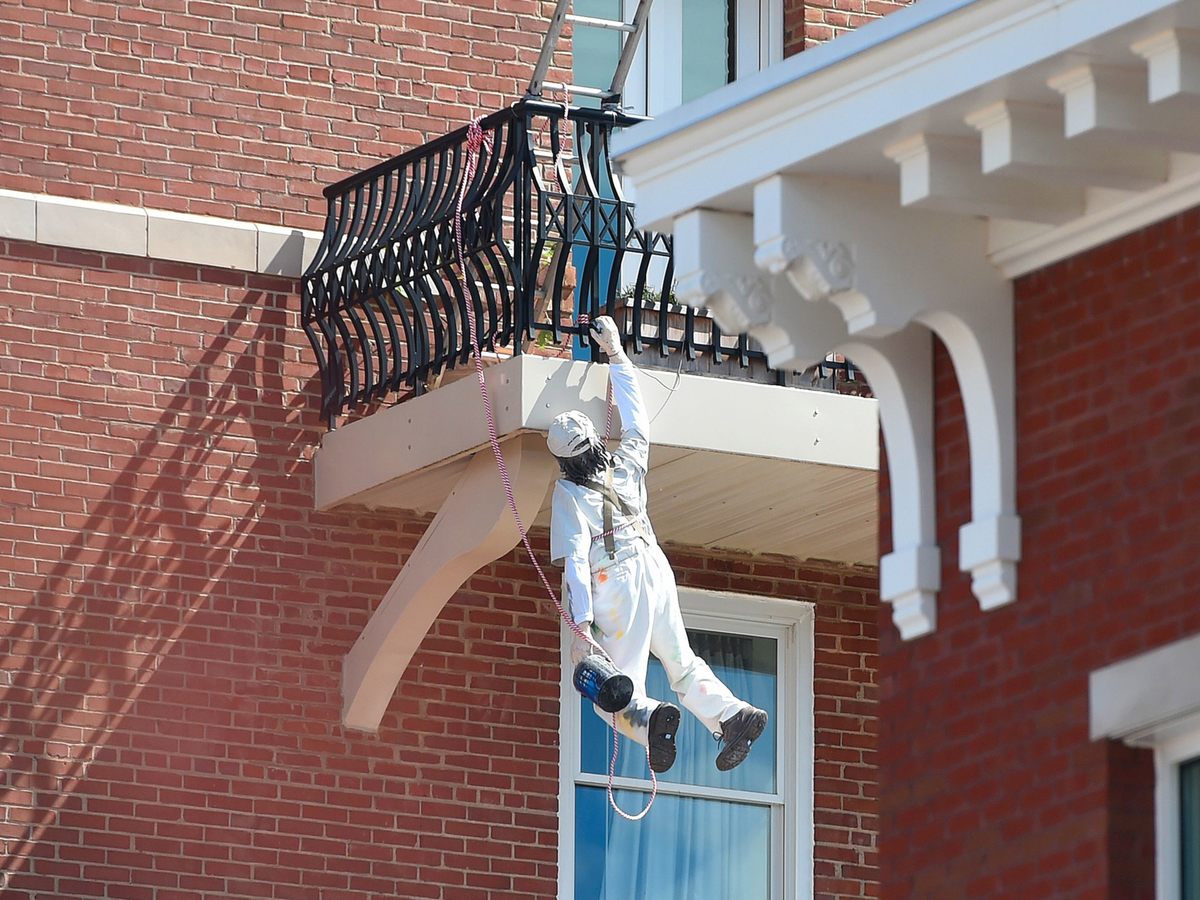
Soon thereafter, the 19-year-old Cline got an idea. In 1980, he was reading a magazine with an article about a Hollywood Monster Museum. “I thought, ‘Well, that’s a great idea, but it’s been done,’” he says. “Then I started thinking about what makes monsters scary. About the nature of fear. So much of it’s subconscious. They’re these remnants of childhood we never really confront. Like, being scared of what’s in the closet or under the bed.”
Inspired, Cline envisioned an interactive museum where adults and children could have a first-hand encounter with such archetypes. In the process, those experiences might rob the nightmares of their power.
Initially, he sought patronage to build along Virginia Beach’s oceanfront tourist strip, but hit a wall.
“I was so naive. I thought I’d go in there and pitch city officials and business owners, and they’d be blown away,” says Cline. “They either refused to see me, laughed in my face, or, in one instance, had security guide me to the nearest exit.”
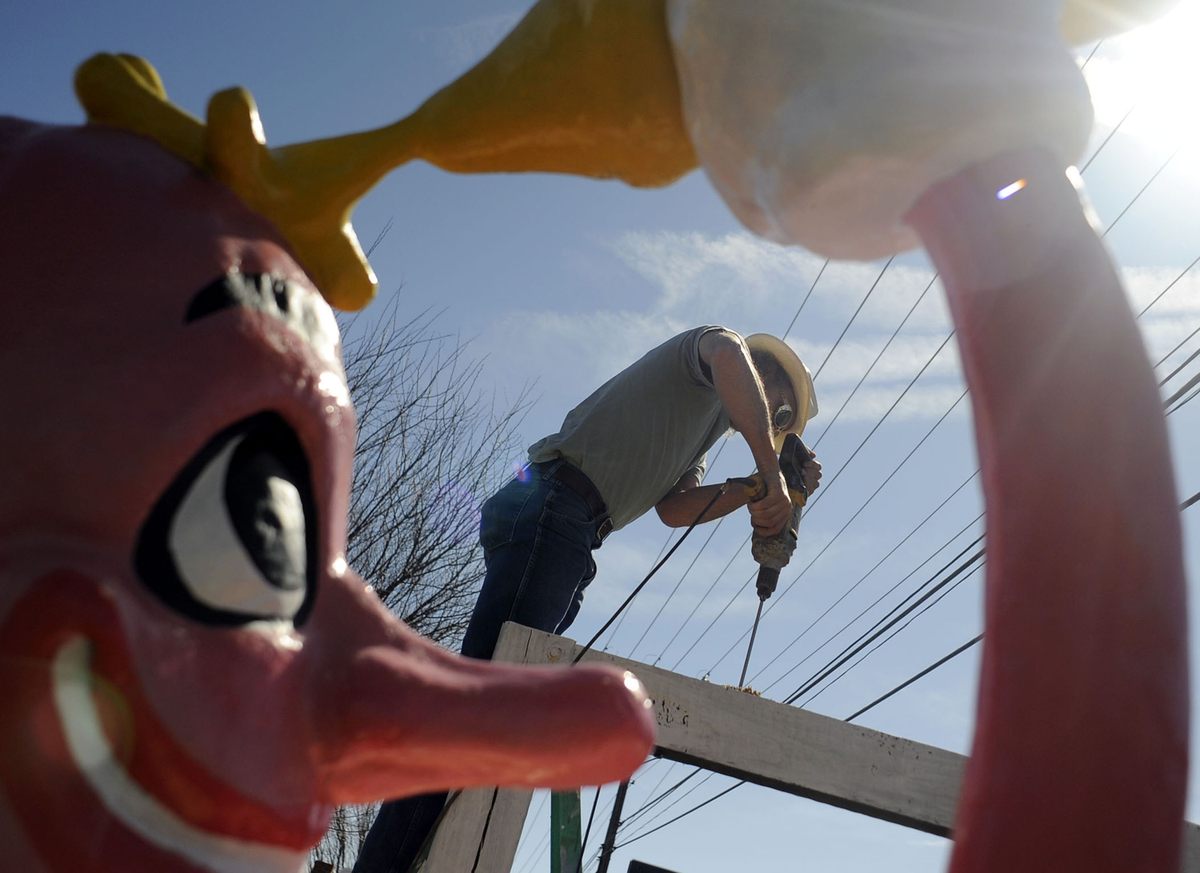
Refusing to give up, Cline subsequently managed to negotiate a land-use contract for a large warehouse and adjacent buildings on the outskirts of the unincorporated community of Natural Bridge. Due to its dilapidated condition and rural location, rent was next to nothing.
He spent the next two years working odd jobs to fund improvements to the property and his sculpture-making. Professor Cline’s Monster Museum opened in 1982. By 1990, it had been incorporated into a larger attraction called the Enchanted Castle.
Outside, there were castle towers, parapets, bungee-jumping pigs, and a courtyard with dinosaurs attacking vehicles, which were piloted by bionic soldiers. Inside were 10-foot spiders and ticks with saddles, Escher-ian stairways to nowhere, a tornado room, and a sinking Titanic. Featuring dragons, hidden passages, a working river, a magic show, and a walkable rainbow leading to a pot of gold, a visit to the Enchanted Castle was like entering a real-life Wonka factory. Tourists flocked by the thousands.
As word of Cline’s talent spread, he says he began to get work designing props for high-end putt-putt courses, science museums, billboards, theme parks, films, Broadway plays, and companies contracting to rock stars like Alice Cooper. Meanwhile, he continued expanding his own attractions.
In 2001, tragedy struck. The Enchanted Castle, Monster Museum, and most of its surrounding fixtures burned to the ground.
Cline was quick to rebuild. Within weeks, he’d negotiated a deal with the then-owners of the geological formation and tourist attraction of Natural Bridge, and launched a wholesale renovation of a Victorian mansion on the property. Upon completion, Cline’s new and improved 30-plus-room Haunted Monster Museum was home to hundreds of monsters. En route to the house, visitors passed by Foamhenge (which was relocated to a farm in Northern Virginia when the property became a State Park in 2014) and the Dinosaur Kingdom, a walkthrough attraction depicting the disastrous results of a group of Union soldiers’ attempts to train a herd of lost dinosaurs.
Unfortunately, the Haunted Monster Museum was ill-fated as well. In 2012, after 11 years of operation, it too was destroyed by a fire.

Considering Cline’s most beloved works have twice been reduced to ashes, you might expect him to be embittered. However, that’s far from the case.
“I used to close my Enchanted Castle tours by saying, ‘There are no endings, only beginnings,’” he explains. “The nature of our life on this planet is impermanence. And that’s how I look at these things. I chose to take these fires as a sign it was time to move on and do something new.”
Following the 2012 fire, Cline leased 16 wooded acres and set about constructing an aggrandized version of Dinosaur Kingdom. Based on the same sci-fi yarn about dinosaurs being involved in the U.S. Civil War, Dinosaur Kingdom II now includes more than 100 dinosaurs and sculptures. It was opened for limited viewing in 2014, and has been expanded each year since. Cline anticipates it will be fully realized by 2020, but says that, barring another catastrophe, he’ll likely add to it for the rest of his life.
Inside Dinosaur Kingdom, you’re presented with a 28-page comic-book telling the story of the park. From there, to a soundtrack of roars and screams, you pass through Professor Cline’s time machine—a rumbling, revolving tunnel equipped with strobe-lights and fog effects. You emerge onto a gravel path winding through a ruined 19th-century mining village featuring Bigfoot, slime creatures, embattled Union soldiers, a clapboard church, bionic Stonewall Jackson, and, of course, dinosaurs.
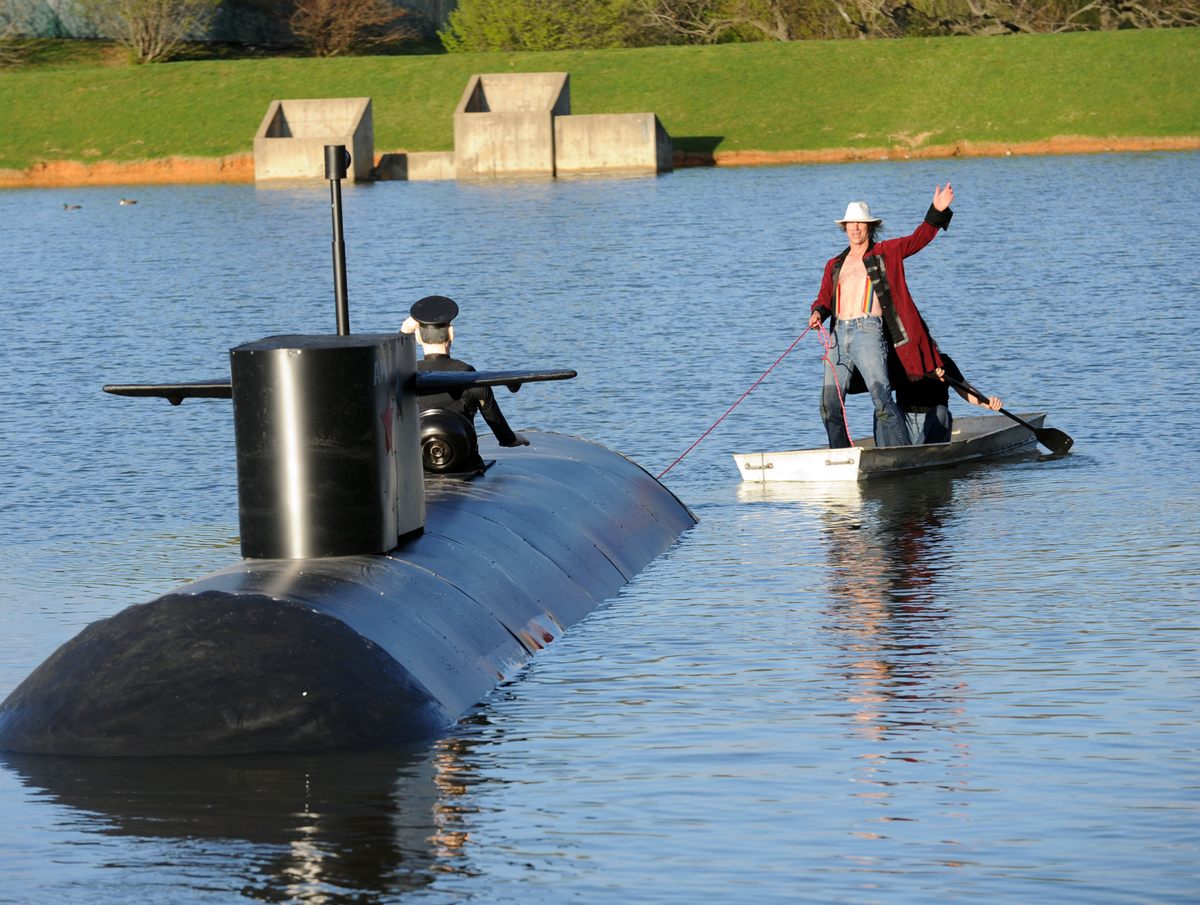
In early 2016, Cline was invited to do another formal show at the William King Museum of Art in Abingdon, Virginia. The exhibit was titled, Roadside Attractions: The Weird and Wonderful Worlds of Mark Cline, and was described by museum personnel as an “overwhelming success.”
Plans for more shows are in the works. Cline says he’s presently talking with a number of D.C. and New York venues, and has a show in the works at Meow Wolf in New Mexico.
With Dinosaur Kingdom II receiving a glowing write-up in US News & World Report in the summer of 2017, he says things are looking up.
“If you would have told me this is what my life was going to be like when I was 18 or 19, I’d have laughed in your face,” he reflects. “The goals I set for myself were probably the craziest, most inscrutable things a person could come up with. And if I told you right now a thousand of my wildest dreams have come true, that would be the absolute truth.”
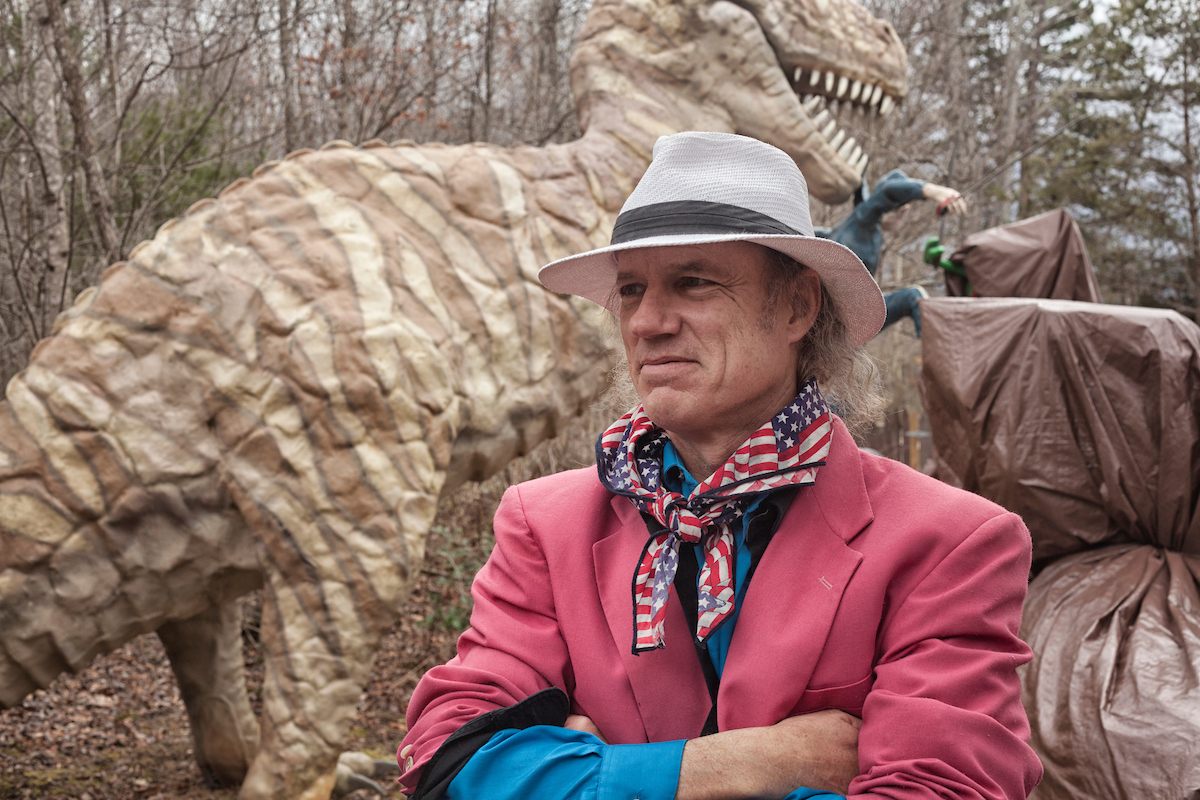




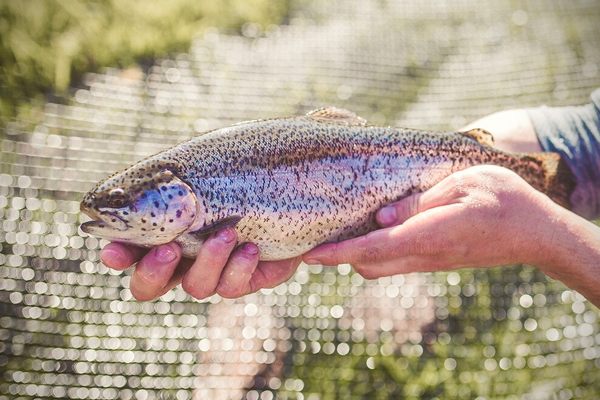

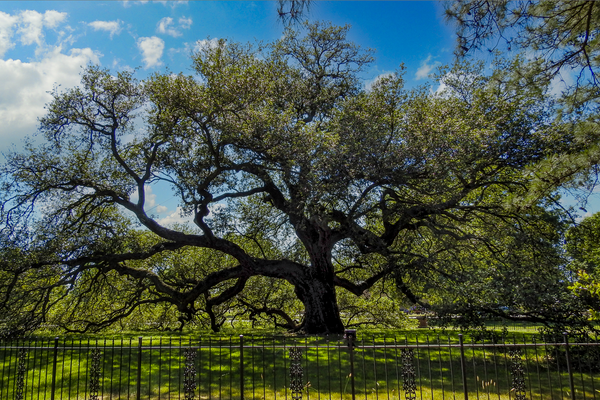
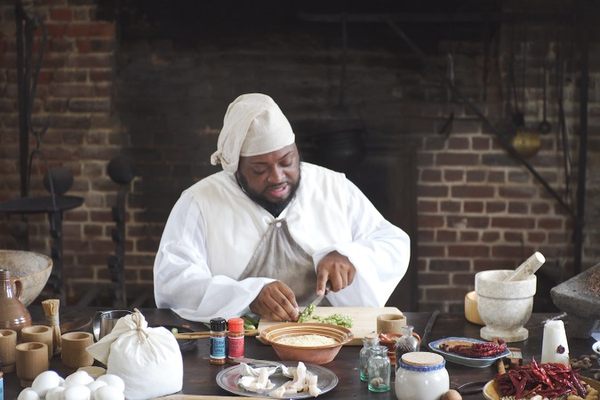







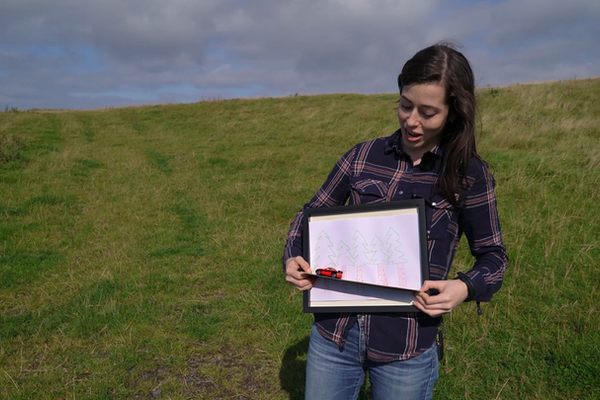



Follow us on Twitter to get the latest on the world's hidden wonders.
Like us on Facebook to get the latest on the world's hidden wonders.
Follow us on Twitter Like us on Facebook